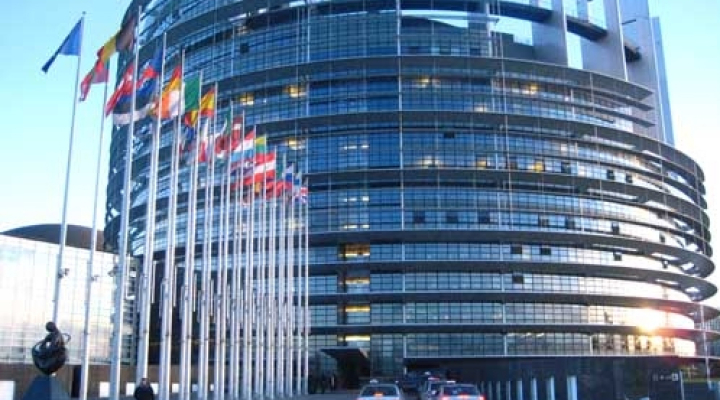Online atlas of the World's Languages in danger presented in Strasbourg
The European Parliament’s Intergroup for Traditional Minorities, National Communities and Languages, of which DAHR MEP Csaba Sógor is also a member, held this year’s first meeting on 17 January.
At the meeting Anahit Minasyan programme specialist from UNESCO and chief editor Christopher Moseley presented the third, upgraded version of the Interactive Atlas of the World’s Languages in Danger, which was first published in print in 2010 in three languages (French, English and Spanish), and which is now available online (Atlas UNESCO des langues en danger dans le monde) at: http://www.unesco/org/new/en/culture/themes/endangered-languages/atlas-of-languages, and: http://www.unesco/org/culture/languages-atlas.
The goal of this UNESCO project is the preservation of the linguistic heritage of the world, the consolidation of language diversity on a global scale and the encouragement of language diversity in cyber space. It also aims to facilitate information on any language-related subject of general interest.
The atlas is the result of an international cooperation of over 30 linguists. The online version was upgraded on numerous occasions, for instance 375 new articles have been added, and so now it contains the description of 2.500 languages on 62 maps. Voice recordings in the endangered languages are also available online. The atlas is a great tool for authorities, language communities, and it can be used for educational or informational purposes.
Dr. Christopher Moseley specified that nine different criteria had to be met for a language to be declared endangered. The experts analysed the extent of passing the language down through the generations, the number of people who speak the language and the percentage of those who speak it in relation to the entire population, as well as the “language switching” factor. The existence and accessibility of didactic material was also relevant, as well as the governmental and institutional policies regarding the language, it’s official status and the extent to which it’s currently being used. One important factor was the community members’ attitude towards the language and the existence or lack of written documentation on it (grammar).
The researcher underlined that every language represents a unique ideology; it contains a specific set of values, a philosophy and has cultural functions. “Languages are the vectors of tradition”, said Moseley, stressing that the extinction of a language threatens the heritage of a community. The most endangered languages can be found in Melanesia, Sub-Saharan Africa and South America.
In the second part of the meeting Catalan anthropologist Jordi Baltà Portolés gave a presentation on the cultural footprint as a tool for sustainable growth, from the perspective of his recent book published in English and French (Approaches to a Cultural Footprint - Variations autour du concept d'empreinte culturelle, 2011, 55p) and edited by the Centre Maurits Coppieters from Bruxelles. Baltà Portolés underlined the similarities between the cultural and the ecological footprint, saying that a methodology for preserving European linguistic diversity can be elaborated using the one set up for reducing our ecological footprint, and that this methodology should be properly sustained with political will.
The goal of this UNESCO project is the preservation of the linguistic heritage of the world, the consolidation of language diversity on a global scale and the encouragement of language diversity in cyber space. It also aims to facilitate information on any language-related subject of general interest.
The atlas is the result of an international cooperation of over 30 linguists. The online version was upgraded on numerous occasions, for instance 375 new articles have been added, and so now it contains the description of 2.500 languages on 62 maps. Voice recordings in the endangered languages are also available online. The atlas is a great tool for authorities, language communities, and it can be used for educational or informational purposes.
Dr. Christopher Moseley specified that nine different criteria had to be met for a language to be declared endangered. The experts analysed the extent of passing the language down through the generations, the number of people who speak the language and the percentage of those who speak it in relation to the entire population, as well as the “language switching” factor. The existence and accessibility of didactic material was also relevant, as well as the governmental and institutional policies regarding the language, it’s official status and the extent to which it’s currently being used. One important factor was the community members’ attitude towards the language and the existence or lack of written documentation on it (grammar).
The researcher underlined that every language represents a unique ideology; it contains a specific set of values, a philosophy and has cultural functions. “Languages are the vectors of tradition”, said Moseley, stressing that the extinction of a language threatens the heritage of a community. The most endangered languages can be found in Melanesia, Sub-Saharan Africa and South America.
In the second part of the meeting Catalan anthropologist Jordi Baltà Portolés gave a presentation on the cultural footprint as a tool for sustainable growth, from the perspective of his recent book published in English and French (Approaches to a Cultural Footprint - Variations autour du concept d'empreinte culturelle, 2011, 55p) and edited by the Centre Maurits Coppieters from Bruxelles. Baltà Portolés underlined the similarities between the cultural and the ecological footprint, saying that a methodology for preserving European linguistic diversity can be elaborated using the one set up for reducing our ecological footprint, and that this methodology should be properly sustained with political will.











